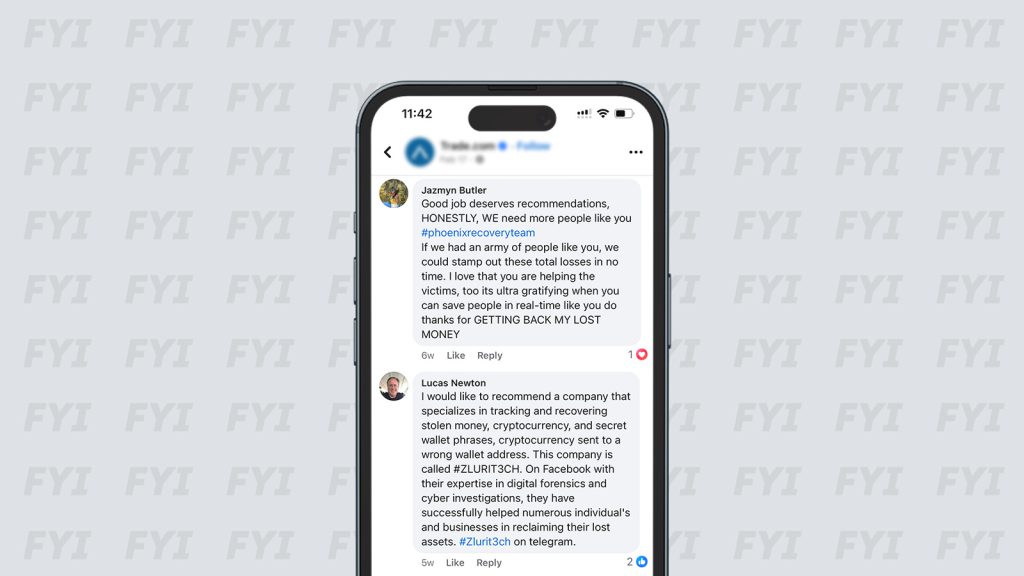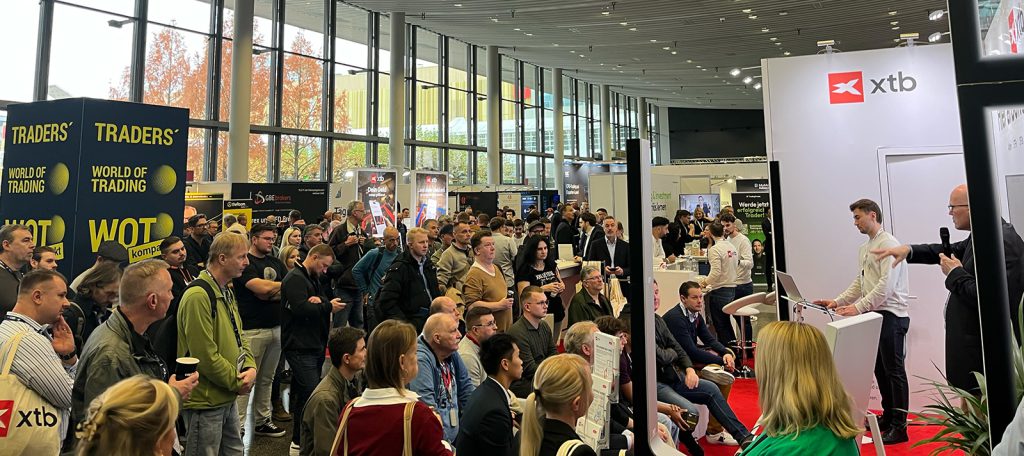Avoid These 7 Mistakes on Social Media for Your Trading Brand
Social media should be one of the most powerful growth channels for any trading brand. And yet, many brokers, prop firms, and fintechs are still using it like it’s 2015.
For most trading brands, social media should be one of the most effective channels for growth. It’s where your audience already spends time, talks about the markets, shares opinions, and follows trends. And yet, many brokers, prop firms, and fintech companies still treat it like it’s just another box to tick.
Old habits die hard. In a lot of cases, content is still created with a “publish and promote” mindset. A new blog post goes live, so the team grabs a snippet, adds a graphic, and pushes it out on LinkedIn or Instagram. After that, it’s back to business as usual.
But platforms have evolved—and user behavior along with them. What worked a few years ago isn’t going to move the needle today. Social media is no longer just a distribution channel. It’s a space where relationships are built, communities form, and attention is earned through real engagement.
This post breaks down 7 common mistakes we still see in the way trading brands use social media. You’ll also get practical tips for what to do instead.
Let’s get into it.
Treating Social Media as Just Another Distribution Channel
It used to be common practice: publish something on your website, then ask the social media manager to share it on Facebook or LinkedIn. That was the playbook for years, and many brands are still using it.
But platforms today are designed to keep users in the app. Outbound links, especially those that take people away from the platform, often get penalized by the algorithm. Your content might look great, but if it’s built around sending people elsewhere, it won’t get much reach.
Instead of treating social media as a tool to drive traffic, it’s worth seeing it for what it actually is. A place to engage. A place to connect with people. A place to stay relevant in the conversations your audience already cares about.
If your only goal is to get clicks, you’re going to miss what really drives performance. The algorithm looks for signals like comments, saves, shares, and reactions. Not just link clicks.
You can still promote your content, of course. But the focus should be on how it performs in-feed. Ask yourself if someone would find value in the post without ever leaving the platform. That’s the kind of content that works best.
Trying to Be Everywhere
With so many platforms out there—LinkedIn, X, Instagram, TikTok, YouTube, Discord, Telegram—it’s easy to feel like your brand needs to be active on all of them. But trying to do everything at once usually leads to doing none of it well.
Most teams don’t have the resources to create platform-specific content for six or seven channels. What often happens instead is one piece of content gets slightly repurposed and pushed out everywhere. It keeps the feeds looking busy, but it doesn’t build real traction.
A better approach is to focus on two or three platforms where your audience is actually active. Spend time learning how those platforms work, what your audience responds to, and how to create content that feels native there.
If there’s a platform you want a presence on but don’t have the time to manage properly, that’s where a specialist can help. A good social media consultant can step in with a clear plan and make sure your brand stays visible without burning through internal resources.
Post and Disappear
A common pattern we still see is brands posting content, then going quiet. The post goes live, it looks polished, the caption checks all the boxes. And then nothing happens after that.
No replies to comments. No follow-up. No sign that anyone from the brand is actually present.
When that happens, it becomes obvious that the content was created for marketing purposes, not for starting a real conversation. And in spaces like trading and fintech, where people often want to talk about market moves, opinions, and ideas, silence sends the wrong message.
Your audience isn’t just looking for information. They’re looking for a signal that someone is listening. Even small actions like liking a comment, responding with a quick thank you, or answering a simple question can go a long way. It shows that there’s a real person behind the account.
Being active on social doesn’t just mean posting regularly. It also means showing up after the post goes out. Engaging in the comments, replying to DMs, and being part of the conversation all help you build trust—and that’s what turns a passive audience into a real community.
Being Inconsistent
Consistency often gets overlooked, but it’s one of the key factors in building a strong presence on social media. When brands disappear for weeks or months at a time, it doesn’t just affect visibility—it erodes trust.
The reason this happens is simple. Social media tends to get treated as a side project. It sits somewhere between PR and customer support, and when things get busy, it’s one of the first tasks to drop off the list. A page that hasn’t posted in six months is usually the result of too many priorities and not enough process.
But the platforms notice when you’re inconsistent. So does your audience. Posting regularly shows that you’re present, active, and worth following. It’s also a way to stay top of mind for your clients, even during periods when they’re not actively trading.
You don’t need to post daily to be consistent. What matters is having a rhythm that’s realistic for your team. A couple of strong posts each week is better than random bursts followed by long gaps. Planning ahead and building repeatable formats can help make this manageable. When social is treated as a core channel instead of a last-minute task, the results follow.If you’re not showing up regularly, you’re likely not showing up at all.
Ignoring Video and Live Content
Social media today is built around video. Short clips, long-form explainers, livestreams—this is the content that dominates feeds and drives engagement. Platforms have shifted in that direction because that’s what users prefer, and brands that adapt to this trend usually see better results.
Despite this shift, many trading companies still avoid video. The reasons are understandable: limited resources, no one comfortable on camera, or concerns about compliance. But avoiding video means missing out on one of the most effective ways to build trust and visibility.
Video lets people connect with your brand on a more personal level. It gives you the chance to explain ideas clearly, react to the markets in real time, and build familiarity with your audience. Live content goes even further by creating opportunities for direct interaction, which is especially valuable in a space that’s built on transparency and credibility.
You don’t need a full production team to start. Even simple, well-framed videos with clear value can go a long way. What matters most is showing up in a format that aligns with how people are actually consuming content right now.
Compliance Slip-Ups
In trading and investing, compliance isn’t just important—it’s expected. But take a quick look at some brand accounts on social, and you’ll find plenty of posts missing key disclosures or risk warnings. Some are too small to read, others are buried in the caption, and a few don’t include them at all.
This isn’t just a branding issue. It’s a regulatory risk. With new financial promotion rules rolling out across regions like the UK, Europe, and Australia, regulators are paying more attention to social content than ever. One mistake can trigger a bigger problem if the right guardrails aren’t in place.
It’s not just about what you post either. Comments matter, too. Scammers and fake accounts often target trading brands, and if your team isn’t monitoring replies or removing suspicious activity, it creates vulnerabilities for both your audience and your reputation.
The goal is to strike a balance. Compliance shouldn’t hold your content back—but it should be part of the creative process from the start. Legal and marketing teams need to work together to create content that is clear, accurate, and still engaging. Because in this space, trust is built not only through what you say, but how responsibly you say it.

Not taking your comment moderation duties serious can have negative implications
Outsourcing Without Domain Knowledge
Working with an outside agency can be a smart move, especially if your team is stretched thin. But if that agency doesn’t understand the trading world, you might be creating more problems than solutions.
When agencies lack industry knowledge, the content they produce often feels off. It may look polished, but it misses the language, tone, and timing that matter in this space. That’s how you end up with motivational quotes about trading or vague tips that don’t really say anything.
The financial audience is sharp. They notice when something feels generic. Traders are looking for insights, not just posts that follow trends. Whether your clients are day traders, long-term investors, or crypto enthusiasts, the content has to speak their language.
An agency that understands your audience and the regulations you operate under can make a big difference. They’ll know when to move fast, when to stay cautious, and how to create content that’s not only engaging but also credible.
If your content doesn’t reflect the way your audience thinks and talks, you’re not building a connection—you’re just filling space.
Next Steps
Let’s be honest: social media isn’t easy. It moves fast, it changes often, and it’s not something that should be left as a side project for whoever has a bit of free time.
To do it well in the trading world, you need more than just a content calendar. You need alignment across the business. That means input from product, compliance, marketing, and even your leadership team. Without that coordination, it’s easy to end up with content that looks good but doesn’t deliver much value.
At FYI, we work with trading brands to build social strategies that are actually built for this space. Ones that combine creative ideas with clear messaging and strong compliance foundations. Whether you need help getting started, refining your approach, or managing day-to-day execution, we’re here to support you.
Want to find out if we’re the right fit? Book a free intro call and let’s talk.
You Might Also Like
Dead Props: Over 100 Prop Firms Have Already Disappeared in 2025
Prop firms are easy to launch and often just as quick to disappear. More than 100 prop trading websites went…
Top Expos to Attend in 2026 for Online Brokers, Prop Firms & FinTech B2B Providers
Expos and B2B conferences are booming in the trading, fintech and prop trading world. But with so many events happening…
New Visitor Record! World of Trading Expo exceeds all expectations. Trading is more popular than ever in Germany.
The World of Trading 2025 in Frankfurt attracted over 6,000 visitors – showing that retail trading in Germany remains highly…
AI Visibility: How to Optimise for ChatGPT, AEO, and GEO as a Prop Trading Firm or Broker
SEO isn’t dead, but it’s definitely not what it used to be. We’re entering a world where people don’t Google…
Dead Props: Over 100 Prop Firms Have Already Disappeared in 2025
Prop firms are easy to launch and often just as quick to disappear. More than 100 prop trading websites went…
Top Expos to Attend in 2026 for Online Brokers, Prop Firms & FinTech B2B Providers
Expos and B2B conferences are booming in the trading, fintech and prop trading world. But with so many events happening…
New Visitor Record! World of Trading Expo exceeds all expectations. Trading is more popular than ever in Germany.
The World of Trading 2025 in Frankfurt attracted over 6,000 visitors – showing that retail trading in Germany remains highly…
AI Visibility: How to Optimise for ChatGPT, AEO, and GEO as a Prop Trading Firm or Broker
SEO isn’t dead, but it’s definitely not what it used to be. We’re entering a world where people don’t Google…







